Psychoanalysis from the Indian Terroir
Psychoanalytic Studies: Clinical, Social, and Cultural Contexts
Series Editor
Michael OLoughlin, Adelphi University
Mission Statement
Psychoanalytic Studies seeks psychoanalytically informed works addressing the implications of the location of the individual in clinical, social, cultural, historical, and ideological contexts. Innovative theoretical and clinical works within psychoanalytic theory and in fields such as anthropology, education, and history are welcome. Projects addressing conflict, migrations, difference, ideology, subjectivity, memory, psychiatric suffering, physical and symbolic violence, power, and the future of psychoanalysis itself are welcome, as are works illustrating critical and activist applications of clinical work.
See https://rowman.com/Action/SERIES/LEX/LEXPS for a list of advisory board members.
Titles in the Series
A Three-Factor Model of Couples Psychotherapy: Projective Identification, Level of Couple Object Relations, and Omnipotent Control , by Robert Mendelsohn
Psychoanalysis from the Indian Terroir: Emerging Themes in Culture, Family, and Childhood in India , edited by Manasi Kumar, Anup Dhar, and Anurag Mishra
Psychoanalysis from the Indian Terroir
Emerging Themes in Culture, Family, and Childhood
Edited by Manasi Kumar, Anup Dhar, and Anurag Mishra
Foreword by Erica Burman
Lexington Books
Lanham Boulder New York London
Published by Lexington Books
An imprint of The Rowman & Littlefield Publishing Group, Inc.
4501 Forbes Boulevard, Suite 200, Lanham, Maryland 20706
www.rowman.com
Unit A, Whitacre Mews, 26-34 Stannary Street, London SE11 4AB
Copyright 2018 by The Rowman & Littlefield Publishing Group, Inc.
All rights reserved. No part of this book may be reproduced in any form or by any electronic or mechanical means, including information storage and retrieval systems, without written permission from the publisher, except by a reviewer who may quote passages in a review.
British Library Cataloguing in Publication Information Available
Library of Congress Cataloging-in-Publication Data
Names: Kumar, Manasi, editor. | Dhar, Anup, editor. | Mishra, Anurag, editor.
Title: Psychoanalysis from the Indian terroir : emerging themes in culture, family, and childhood / edited by Manasi Kumar, Anup Dhar, and Anurag Mishra ; foreword by Erica Burman.
Description: Lanham : Lexington Books, [2017] | Series: Psychoanalytic studies: clinical, social, and cultural contexts | Includes bibliographical references and index.
Identifiers: LCCN 2017058174 (print) | LCCN 2017055696 (ebook) | ISBN 9781498559423 (Electronic) | ISBN 9781498559416 (cloth : alk. paper)
Subjects: LCSH: PsychoanalysisIndia. | Psychoanalysis and cultureIndia.
Classification: LCC BF173 (print) | LCC BF173 .P77536 2017 (ebook) | DDC 150.19/50954dc23
LC record available at https://lccn.loc.gov/2017058174
 The paper used in this publication meets the minimum requirements of American National Standard for Information SciencesPermanence of Paper for Printed Library Materials, ANSI/NISO Z39.48-1992.
The paper used in this publication meets the minimum requirements of American National Standard for Information SciencesPermanence of Paper for Printed Library Materials, ANSI/NISO Z39.48-1992.
Printed in the United States of America
Contents
Foreword
Erica Burman
This extraordinary collection highlights the emergence of a new strand of critical psychoanalytic theory and practice that is debating how culture and psychoanalysis mix and make each other. Each term in this cryptic title, Psychoanalysis from the Indian Terroir, poses rather than answers questions. It sets in play a terrain of inquiry that it refrains from fixing or stabilizing. Terroir , a suitably technical name for the combination of climate, soil and texture that allows for cultivation (of wine or other specialist food crop), topicalizes the question of setting and outcome without presuming what its constitutive elements are, or what it is they produce. Such technical obscurity of terminology perhaps befits a practice that is typically seen as being as elitist or inaccessible as psychoanalysis. This is notwithstanding the commitment to free psychoanalytic provision that characterized the early institutionalization of psychoanalysis in inter-war Germany from the 1920s until the Nazis closed down (and repressed) the public psychoanalytic clinics, as well as driving the psychoanalysts intoat bestexile. Further, the French allure of terroir that, to a British reader like me, conveys sophistication as well as the requirement for delicate appreciationspeaks to the necessary specificity of readings of psychoanalysis that are ever at play. But even if we encounter British or German psychoanalytic authors in this text, as well as Green, Deleuze, and Lacan, their reading or application does not presume a mere transposition from one geopolitical space to another, in the course of which such spaces acquire a spurious reification. Rather, we are invited to explore the how, the making and re-making of psychoanalysis in a particular, rich, biopolitical environment, where psychoanalysis is as much what is grown as what is imported.
Indeed the botanical metaphor is extended: the editors discuss the question of planting as well as what is planted, and play with whether this process is an implanting or something that becomes home-grown. Discussion of hybrids could incite a previous or prior authenticity. But this would essentialize that which might be understood to be contingent, if not arbitrary. How significant is it that psychoanalysis was developed in Judeo-Christian societies as, perhaps, an effect of the alienation produced by industrialization in the late nineteenth century? Can, or should, we disaggregate capitalism and modernity from what is sometimes called westernization, albeit that this was resourced by as well as warranting colonial exploitation? How are we to understand the forms of experience, including the distress and social suffering wrought by dispossession and social exclusion that were the underside of the story of European development? How should we address shifts in family dynamics, the (re)invention of the bourgeois nuclear family, the forms of forced or elective migrations to cities, the intensifications and reformulations of class/caste and gender divisions and relations enabled, produced, allowed by such seismic shifts?
Clearly, the sun-lit hillsides of proliferating vines envisaged through the trope of terroir are neither stable, nor are their limits enclosed. Indeed the focus on (im)plantation seems also to evokealbeit implicitlyquestions of violence, cultural appropriation, and perhaps even sexual/reproductive manipulation; of surrogacy rather than conception, commerce or exploitation rather than (only) intimacy. In his History of Sexuality: an introduction, Michel Foucault writes of the implantation into bodies of forms of power/knowledge relations around sexuality that owe their current forms to a secularization and scientization of the practice of religious confession. Indeed it is this incitement to self-knowledge and giving an account of ones true, innermost thoughts and feelings that form the conditions of possibility for psychoanalysis. The perversion of this implantation, Foucault writes, is not that aberrant impulses or fantasies should be silenced or erased, but rather that the demand to speak of them in fact constitutes, stabilizes, and naturalizes them. Thus the cultural-political terrain of and for the development of psychoanalysis as a talking cure or at least a talking method, comes to be situated in specific socio-historical and material conditions such that its emergence or incursion into India calls for reflection and interrogation. Questions of power are foregrounded, not only through topicalizing cultural imperialism and class/caste privilege in what counts as culture, but also in pursuing a psychoanalytic inquiry to explore why and how these power relations come to structure embodied histories that are inhabited, lived, and lived out in particular geopolitical conditions.
Next page
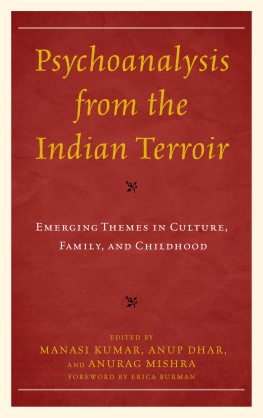

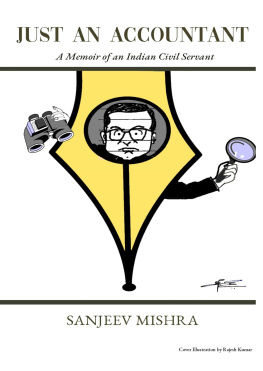
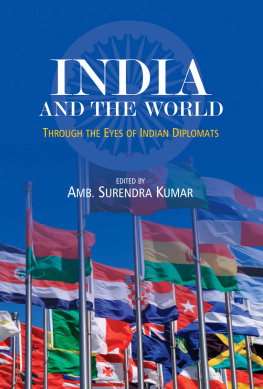
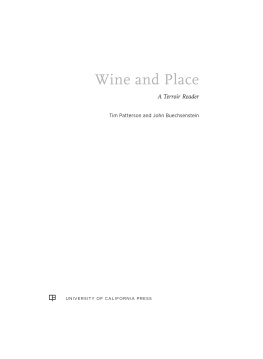
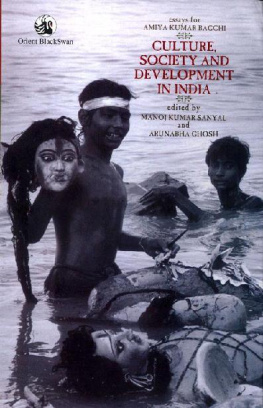
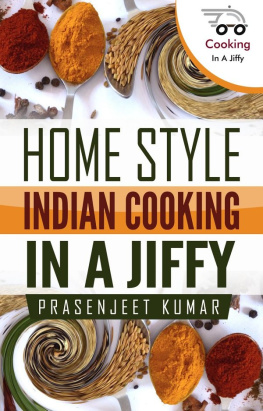
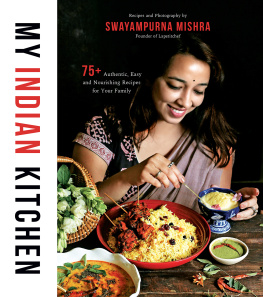
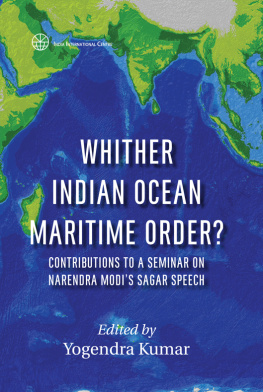


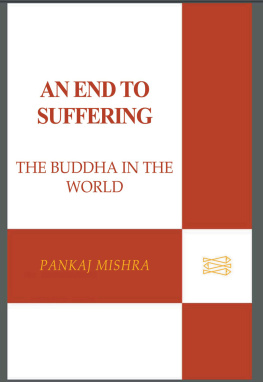
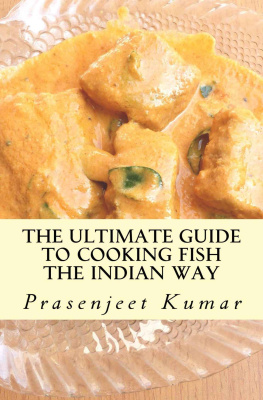
 The paper used in this publication meets the minimum requirements of American National Standard for Information SciencesPermanence of Paper for Printed Library Materials, ANSI/NISO Z39.48-1992.
The paper used in this publication meets the minimum requirements of American National Standard for Information SciencesPermanence of Paper for Printed Library Materials, ANSI/NISO Z39.48-1992.